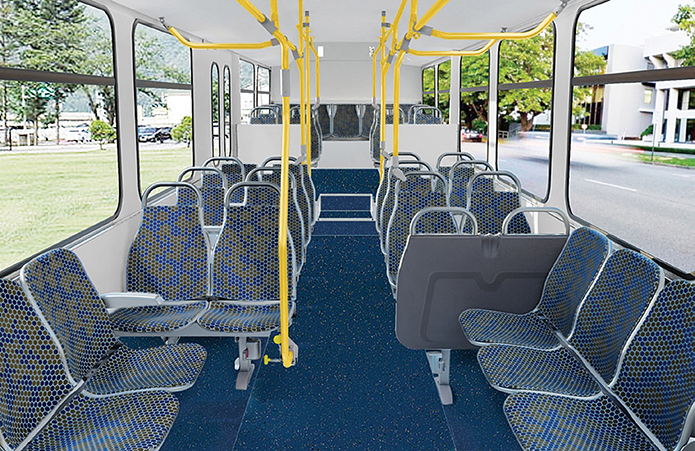
The COVID-19 pandemic brought public transit ridership levels down to historic lows. Transit agencies continue to look for ways to protect riders and regain their confidence in coming back to ride public transit at pre-pandemic levels. One necessary approach to protecting riders is routine cleaning and disinfecting of the surfaces that riders may come in contact with. In addition, antibacterial coatings have been proven to be an effective second defense against bacteria and viruses found on hard and soft surfaces. Antibacterial coatings have been used in food and healthcare industries for decades but are relatively new to the transportation industry.

Effectiveness and safety
If antibacterial coatings are of interest, be sure to use a product that is both effective and harmless to people and the surfaces it protects. Step 1 is to ensure the product is EPA-registered safe to use as a biostatic agent. The company promoting the product should be able to provide a certificate or registration number that can be validated. Step 2 confirms there are no toxins in the formula that shift the product away from being pH neutral. If the pH level is more acidic, some materials receiving application may be corroded, most notably metals. Step 3 is determining the product’s efficacy against bacteria and viruses. The company offering the product should have an extensive list of the pathogens that have been tested to be destroyed or inactivated by the antibacterial coating, but onsite testing is always the best approach.
Onsite testing of efficacy
Adenosine triphosphate (ATP) field testing is a way to measure hygiene cleanliness levels before and after antibacterial coating applications. ATP is the energy molecule found in all living things. ATP monitoring systems use a reagent and light to measure the level of contamination through RLUs, or Relative Light Units. Readings can vary, but luminometer levels in the single digits are considered to be sterile surfaces. Readings up to 30 RLUs are considered “very clean” for critical high-touch surfaces. Higher readings become cautionary around 100, and, at anything over 200, there is a risk of contamination from disease-causing bacteria. To understand ongoing levels of cleanliness on critical surfaces, regular testing should be performed. ATP process shown below.
 How it works
How it works
Antimicrobial barrier treatments protect surfaces from microbes. The invisible bio-barrier coating acts as sharp blades to micro-organisms. When these microbes come in contact with the treated surface, they are punctured and destroyed by the microscopic needles (see Image 1). Once the application dries, it remains affixed to the surface until physically worn off over an extended period. Reapplication timelines vary between three to 30 months, depending on wear levels. Prior to any antibacterial coating application, normal cleaning and disinfecting must be performed. Yet, antimicrobial barriers protect surface materials from deterioration, make future cleanings easier, and eliminate odor-causing bacteria.

Since June of 2020, American Seating (AS) has been applying an antimicrobial coating to all high-touch surfaces of the company’s seating and securement solutions. AS’s ClearRide Powered by PreventX™ has a larger list of pathogens destroyed or inactivated, longer-lasting effects, a longer shelf life and is non-corrosive compared to other offerings on the market. For application to existing transit vehicles, AS is the exclusive distributor of 5-gallon containers of ready-to-use ClearRide. AS regional sales managers are equipped to apply ClearRide and perform ATP testing trials upon request.
Doug Oswald serves as the marketing director for American Seating (AS) and has over two decades’ experience in seating product development. Headquartered in Grand Rapids, Michigan, USA, American Seating employs a U.S.-based workforce and takes pride in sourcing locally. AS has been listening to, designing for and investing in public transportation and related industries for 90 years. Flagship products InSight® and Vision® were conceived, engineered, tested and tooled by AS to meet the needs of the North American transportation market. Visit http://www.americanseating.com for additional information.
